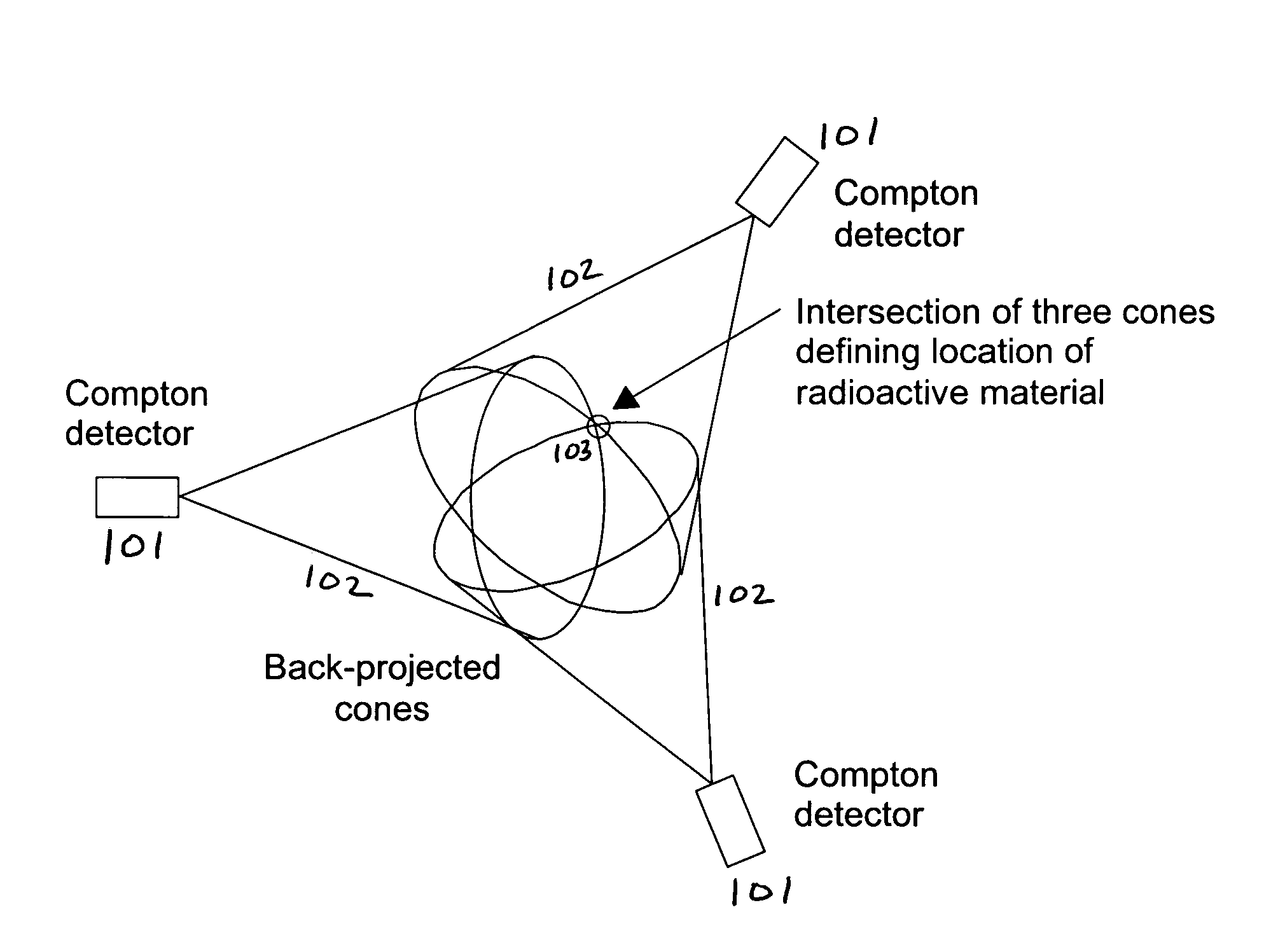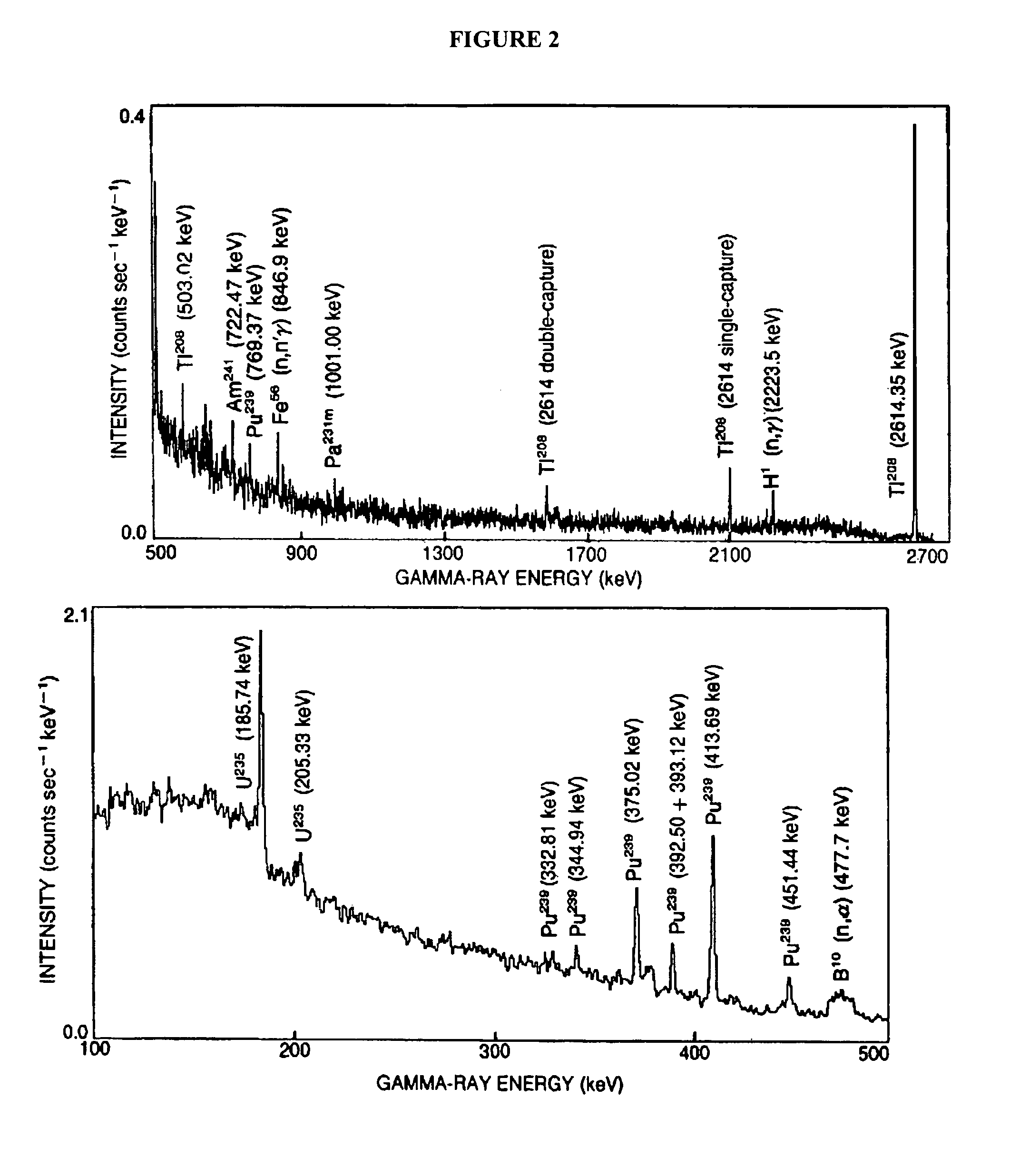Nuclear material identification and localization
a radioactive material and identification method technology, applied in the field of radioisotope localization methods and devices, can solve the problems of ineffective energy spectrum based identification and localization systems, difficult to identify the existence and the location of unknown quantities of radioactive materials, and inefficient energy spectra collection
- Summary
- Abstract
- Description
- Claims
- Application Information
AI Technical Summary
Benefits of technology
Problems solved by technology
Method used
Image
Examples
Embodiment Construction
[0016]A radiation detection, localization and identification system is disclosed. A dispersed array of radiation detectors is networked to act as a unified detection system. This network has a wide area of view and high sensitivity to radiation sources. The system, a Dispersed Compton Radiation Detector system, utilizes the properties of Compton scattering for high energy gamma radiation. Rather than the traditional reliance on measuring full energy interactions for identification and possible localization, the Dispersed Compton Radiation Detector system uses a geometric correlation to identify and localize radiation sources.
[0017]The disclosed system works for all gamma ray emitting radioisotope sources but especially well for sources with high energy emissions emerging, such as shielded strategic nuclear material (SNM). Current systems using total energy identification work best for lower energy gamma rays, where full energy absorption is more probable. However, shielding used to ...
PUM
 Login to View More
Login to View More Abstract
Description
Claims
Application Information
 Login to View More
Login to View More - R&D
- Intellectual Property
- Life Sciences
- Materials
- Tech Scout
- Unparalleled Data Quality
- Higher Quality Content
- 60% Fewer Hallucinations
Browse by: Latest US Patents, China's latest patents, Technical Efficacy Thesaurus, Application Domain, Technology Topic, Popular Technical Reports.
© 2025 PatSnap. All rights reserved.Legal|Privacy policy|Modern Slavery Act Transparency Statement|Sitemap|About US| Contact US: help@patsnap.com



